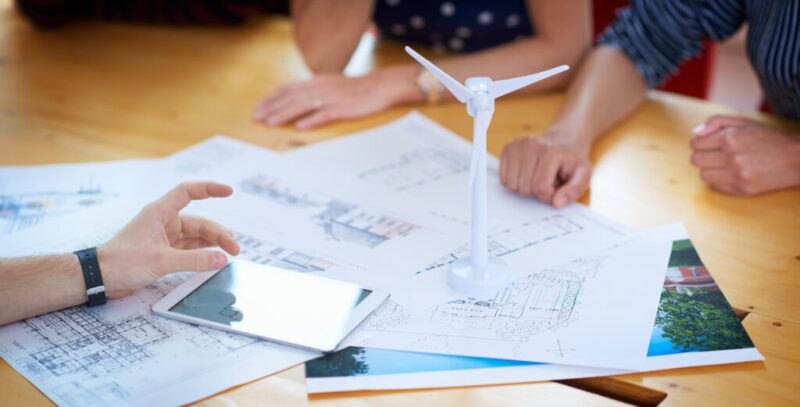In floating wind systems, turbines are built on a steel-and-concrete floating foundation that is tethered to the ocean floor. Compared to fixed wind platforms, floating structures allow operators to generate wind power in deeper waters; the downside is that costs are higher when heavy foundation parts must be shipped at least 30 miles away from a coast.
But perhaps not for long.
Purdue University engineers are researching ways to make these parts out of 3D-printed concrete, a less expensive material that would also allow parts to float to a site from an onshore plant.
3D concrete printing is a form of additive manufacturing—a technique that simplifies the manufacturing process by going directly from 3D model to an actual part—used to fabricate construction components using concrete or a concrete mix. This technique reduces cost, improves quality and design flexibility, and eliminates conventional manufacturing limitations.
The Purdue researchers are working with RCAM Technologies, a startup founded to develop concrete additive manufacturing for onshore and offshore wind energy technology.
The team is developing a method that would integrate a robot arm with a concrete pump to fabricate wind turbine substructures and anchors. A specially formulated concrete—a mixture of cement, sand and aggregates, and chemical admixtures—would control shape stability while the concrete is fresh.
The researchers’ goal is to understand the feasibility and structural behavior of large-scale 3D-printed concrete to determine how gravity affects the durability of the structure.
Scope of the 2-year project includes the conceptual design, preliminary design, and feasibility assessment of a fixed-bottom, suction-bucket support structure, and heavy-lift-vessel. The vessel is proposed as an alternative to the US Department of Energy’s National Renewable Energy Laboratory (NREL)15-MW reference turbine.
While it only accounts for 0.3% of global power generation today, offshore wind holds promise as a commercially viable renewable energy source. In its 2019 outlook on offshore wind, the International Energy Agency (IEA) estimated that global capacity will increase 15-fold over the next 2 decades, turning it into a $1.0-trillion business.
As of last October, BloombergNEF said global benchmark prices for offshore wind dropped 32% in a year and 12% in 6 months. Global benchmark prices hit $78/MWh for the second half of 2019, driven primarily by lower equipment costs.
RCAM’s modular concrete foundation and heavy-lift-vessel alternative help paint an even better picture.
The 3D technology has potential to lower the cost of support structures, develop an alternative solution for heavy-lift vessels, mitigate installation noise concerns, scale to larger turbines and deeper installations, and aid local economies with increased manufacturing business. It may also save money, time, and energy by eliminating the need for concrete molds to shape the desired structure.

